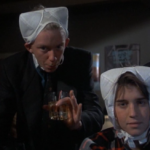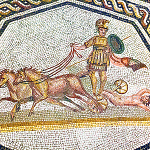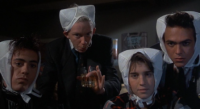The Science–And art–Of A mind In Love
lessons in love from the MRI-primarily based carnival art of Brent Hoff
February 14, 2015
Are you in love or are you in lust? Neuroscience would say the adaptation is in whether or not or now not your brain is producing oxytocin, the bonding chemical that scientists affiliate with monogamous relationships. To oversimplify, love comprises the production of oxytocin and dopamine in the brain, while lust elicits simply the production of dopamine.
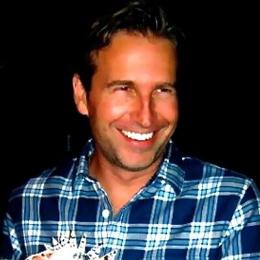
however to artist Brent Hoff, who is interested in how our myriad feelings show up themselves in our brains, the truth about our brains in love is a lot more advanced. “i think we’ve the tendency to cut back love to oxytocin,” he cautions. “‘Love’ is only a phrase and so is ‘lust.’ They probably mix together to extra of a recipe in sure scenarios and in relationships that people have.”
My first introduction to Hoff’s work was once at the Borscht film competition in Miami, where he used to be conducting a lust competitors. together with Stanford scientists, Hoff designed an interactive expertise he calls “The Emotional Arcade,” a “step-proper-up” county-honest fashion sport by which volunteers from the target market compete to really feel an emotion the hardest, selecting between lust, rage, relax, and bliss. An EEG headset displays brain job, and the more you are feeling that emotion the extra air shoots thru a tube and into a balloon. the first one to pop their balloon wins. it’s a capturing contest together with your feelings as the gun.
One commentary Hoff’s made: “In lust competitions, guys begin quick but have a hard time ending, particularly if people are looking at. girls begin slower, however typically dominate.”
Hoff has also collaborated with Stanford neuroscientist Melina Uncapher to design “The Love competitors,” in which seven men and women ranging in a while from 10 to 75 competed to love the hardest. every one was once requested to climb into an MRI computing device and spend 15 minutes fascinated by an individual or memory they hoped would produce the neurochemicals we affiliate with love.
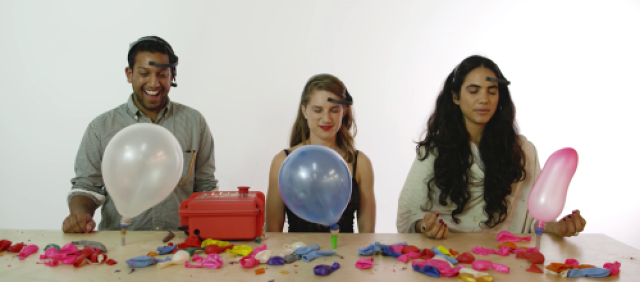
“MRIs are measuring blood float to areas of the mind,” explains Hoff. “So whilst you put someone in the MRI and asked them to love, what you see is a sudden elevate in blood drift to the nucleus accumbens, the place oxytocin is produced, and to the [substantia nigra] the place dopamine is produced.”
Hoff is fast to show that “this is all beautiful new.” because much of the research into the neural underpinnings of love, lust, and relationships remains nascent, certain conclusions which have been drawn have the opportunity of over-representing explicit case research. And some of the most famous research focus on animals, now not people.
Hoff also observes that the science of those emotions steadily contradicts the way in which these feelings really feel to us. “clearly there is a completely different feeling of ‘i like my mom’ or ‘i love this person, my boyfriend or lady friend,” explains Hoff. “they have got totally different energies but they don’t appear that completely different in the brain.” some other tough factor to provide an explanation for is that, within the mind, rage and lust can incessantly seem to be the same. “It’s the identical neurochemicals, in the identical part of the brain, in the same circuitry. It’s almost indistinguishable,” says Hoff. “What the fuck?”
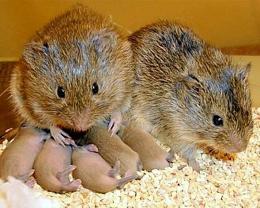
best Wanna Be With You
despite the limits of the blunt gadgets we now have to try to be aware and observe thoughts, Hoff has seen that contributors in his artwork tasks regularly take one thing important far from the emotional intelligence they do achieve. To the shock of many, the neurochemicals of their mind don’t fit what they suspect they’re feeling. infrequently that’s a guy on stage in Amsterdam in a lust competitors realizing he has the hots for a lady he simply met more than for his female friend. however once in a while it’s more therapeutic.
“Pete, who used to be in the Love competitors, he went in believing he was desperately nonetheless in love along with his ex-lady friend,” says Hoff. The MRI machines’ outcomes stated otherwise, and so this man who had stop his job and moved across the united states of america “got here out with his palms raised above his head being like I’m no longer in love along with her. He no longer felt that grieving process.”
Hoff remembers a similar occasion through which a lady in a rage competition skilled the realization she wasn’t as angry at her ex anymore. “Her balloon wasn’t doing the rest. She took off her headset and looked at me and stated, ‘I’m no longer mad at him.’”
“After in view that again and again,” says Hoff, “it makes you question your own feelings. Are these sturdy feelings of hurt or lust, how you really really feel?”

but the way you suppose you feel does actually impact what your physique is feeling. “We get in these emotional patterns, and they’re patterns, that generate neurochemicals. in the event you take into accounts an ex, you are producing stress hormones,” he says. “I’m super occupied with epigenetics, in how your setting changes your biology.”
Epigenetics—the effect of things rather than our DNA on our genes—and not just medication, appears to underlie the best way our brains love. imagine, for example, a 2013 study of prairie voles. The animal is of passion to researchers finding out human mating as a result of it is identified for coupling up in life-long pair bonds, for sharing parental roles, and egalitarian nest constructing. When researchers took in any other case promiscuous voles—voles that principally lived in a “constant orgy,” says Hoff—and dosed them with oxytocin and vasopressin (every other chemical strongly associated with long-term bonding), the voles commenced to partner up, adopting the behavior of their monogamous cousins. The effect, on the other hand, used to be most effective noticed after the voles had spent six hours cohabitating with different voles. that’s to claim, the medication by myself didn’t induce the associate choice—the time the voles spent around every other used to be an important.
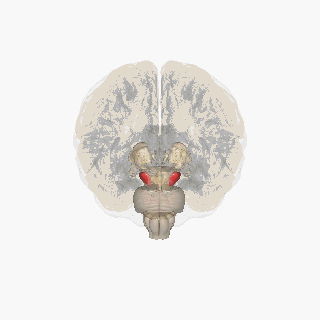
“The drug via itself will not do all these molecular modifications—you need the context: It’s the drug plus the six hours of cohabitation,” Mohamed Kabbaj, a neuroscientist at Florida State college in Tallahassee, informed Nature. This led Kabbaj and his group to conclude that the genes wanted to provide receptors for oxytocin and vasopressin have been activated simplest after animals had frolicked together, pointing to an epigenetic gadget underlying relationship bonds.
There’s clearly an interaction between narrative and brain chemical compounds: otherwise, if these emotions had been in point of fact only a cocktail of oxytocin, dopamine, serotonin, and vasopressin, wouldn’t we be capable to manufacture love or lust artificially? That’s a question Hoff put to one of the most neuroscientists he used to be working with: “Why isn’t there a love drug? Why don’t you simply say your vows, lower your cake, and begin your prescription?”
as of late, philosophers at Oxford and in different places have argued for the advantages of a twenty first-century love potion, and already, that you could purchase oxytocin on Amazon as a nasal spray. however because the neuroscientists explained to Hoff, “it doesn’t do the rest for you as a result of it’s out of your bloodstream in two minutes. those chemical substances need a reminiscence to bond to.”
For now, the love medicine imply little without a good love story.
(319)


